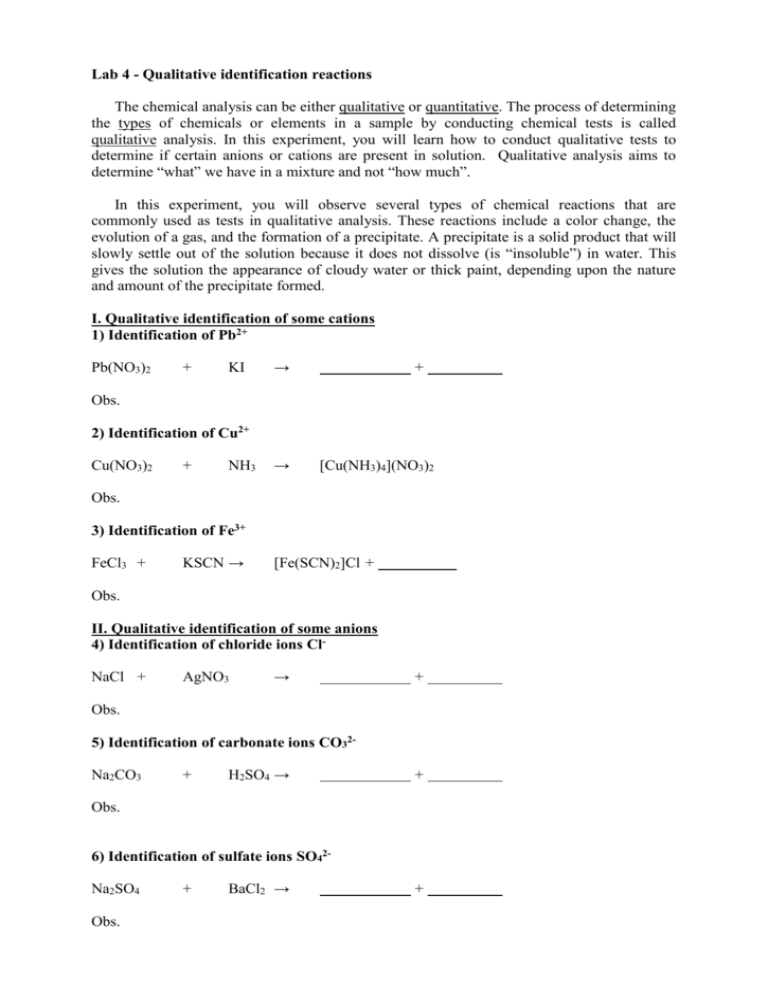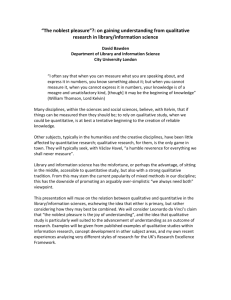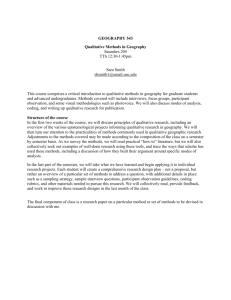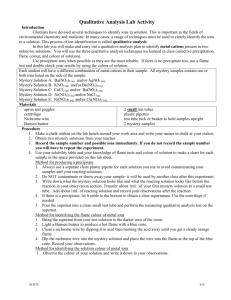Lab 4 - Qualitative identification reactions
advertisement

Lab 4 - Qualitative identification reactions The chemical analysis can be either qualitative or quantitative. The process of determining the types of chemicals or elements in a sample by conducting chemical tests is called qualitative analysis. In this experiment, you will learn how to conduct qualitative tests to determine if certain anions or cations are present in solution. Qualitative analysis aims to determine “what” we have in a mixture and not “how much”. In this experiment, you will observe several types of chemical reactions that are commonly used as tests in qualitative analysis. These reactions include a color change, the evolution of a gas, and the formation of a precipitate. A precipitate is a solid product that will slowly settle out of the solution because it does not dissolve (is “insoluble”) in water. This gives the solution the appearance of cloudy water or thick paint, depending upon the nature and amount of the precipitate formed. I. Qualitative identification of some cations 1) Identification of Pb2+ Pb(NO3)2 + KI → + Obs. 2) Identification of Cu2+ Cu(NO3)2 + NH3 → [Cu(NH3)4](NO3)2 Obs. 3) Identification of Fe3+ FeCl3 + KSCN → [Fe(SCN)2]Cl + Obs. II. Qualitative identification of some anions 4) Identification of chloride ions ClNaCl + AgNO3 → + Obs. 5) Identification of carbonate ions CO32Na2CO3 + H2SO4 → + Obs. 6) Identification of sulfate ions SO42Na2SO4 Obs. + BaCl2 → + Procedure Using a pipette add a few drops of the first chemical in the test tube. Using a clean pipette add a few drops of the second chemical in the test tube. Observe if a reaction is taking place and record your observation, i.e. color change, evolution of a gas, formation of a precipitate Safety Sulfuric acid is corrosive. If you spill acid on yourself, immediately flush the affected area with water for 2-3 minutes and notify the teacher. If acid should get into your eyes, begin flushing your eyes with running water immediately and continue doing so for at least 15 minutes. Silver nitrate will leave dark brown stains on skin and clothing and is poisonous. The stains will disappear from the skin in time, as the stained skin cells flake off, but the stains will not come out of clothing. Be careful not to spill this material. Ammonia solution or ammonium hydroxide is a solution of ammonia in water. It causes eye and skin burns. In case of contact, immediatly flush eyes or skin with plenty of water for at least 15 minutes. Do not inhale. After use close the bottle cap immediately. III. Flame test The flame test is a qualitative analytic method used to determine the presence of certain elements, usually metal ions, based on each element’s characteristic emission spectrum. The sample is introduced to a hot flame and the color change is observed. Na+ color: K+ color: Ba2+ color: Ca2+ color: Cu2+ color:








